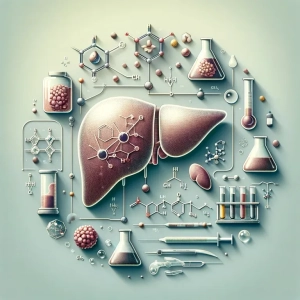Understanding the Essential Role of Amino Acids in Your Diet

In our modern, ever-accelerating society, maintaining a balanced, nutritious, organic diet is more crucial than ever for sustaining health and vitality. One key component often overlooked in the quest for a healthy lifestyle is the adequate intake of high-quality protein. As eloquently discussed in Dr. David Minkoff’s insightful book, “The Search for the Perfect Protein,” the significance of proteins and their building blocks, amino acids, cannot be overstated.
Proteins, the building blocks of life, play a pivotal role in nearly every biological process in the body. “Proteins are indispensable to life’s processes,” Dr. Minkoff writes, highlighting the critical functions they perform, from building and repairing tissues to synthesizing hormones and enzymes. Central to proteins’ efficacy are amino acids, particularly the nine essential ones that the human body cannot synthesize and must obtain from dietary and supplementary sources.
Not all proteins are created equal. The quality of protein, determined by its amino acid composition and our body’s ability to utilize it, is paramount. “The right protein can be the key to unlocking health, vitality, and longevity,” asserts Dr. Minkoff. Hence, selecting high-quality protein sources is vital for ensuring the body receives the full spectrum of essential amino acids it needs to function optimally.
Many individuals unknowingly suffer from protein deficiency, which can manifest in various subtle yet impactful ways, including fatigue, muscle weakness, hair loss, and compromised immunity. Over time, these seemingly minor issues can escalate into more serious health concerns.
Amino acid deficiencies can lead to a wide range of symptoms, affecting various bodily systems. These deficiencies can stem from inadequate intake of essential amino acids, which are vital for numerous bodily functions including protein synthesis, enzyme and hormone production, and immune system support. Consider the following list of common symptoms.
1. Muscle Loss or Weakness: Since amino acids are the building blocks of proteins, a deficiency can lead to muscle loss, weakness, or difficulty building muscle mass.
2. Fatigue: A lack of essential amino acids can result in low energy levels and chronic fatigue, as these compounds play a critical role in energy metabolism.
3. Skin and Hair Problems: Amino acids are crucial for the health of skin and hair. Deficiencies can lead to dry, flaky skin or eczema, hair thinning, and loss.
4. Immune System Weakness: Essential amino acids support immune function. A deficiency might lead to an increased susceptibility to infections or illness.
5. Poor Wound Healing: Amino acids are involved in tissue repair and regeneration. Slow or poor wound healing can be a sign of deficiency.
6. Digestive Problems: Since amino acids contribute to enzyme production, deficiencies can disrupt normal digestion and absorption of nutrients, leading to gastrointestinal disturbances.
7. Weight Loss or Gain: Abnormal or unexplained weight changes can occur, as amino acids impact metabolism and appetite regulation.
8. Mood Disorders: Amino acids are precursors to neurotransmitters that regulate mood. Deficiencies may contribute to depression, irritability, or anxiety.
9. Cognitive Impairment: Difficulty concentrating, memory issues, or a general decline in cognitive function can result from inadequate levels of amino acids, as they are essential for brain health.
10. Stunted Growth in Children: Essential amino acids are crucial for growth and development. A deficiency in children can lead to stunted growth or developmental delays.
11. Cravings for Specific Foods: Cravings, especially for protein-rich foods, may indicate your body’s attempt to correct an amino acid imbalance.
12. Edema: Swelling or fluid retention in the body can sometimes be linked to a deficiency in certain amino acids necessary for maintaining fluid balance.
13. Fertility Issues: Amino acids play a role in reproductive health, and deficiencies can contribute to fertility problems in both men and women.
14. Irregular Menstrual Cycles: Amino acid imbalances can affect hormonal balance, leading to irregularities in menstrual cycles.
15. Sleep Disturbances: Since amino acids like tryptophan are involved in the synthesis of sleep-regulating hormones, a deficiency can lead to insomnia or disrupted sleep patterns.
Achieving an adequate intake of high-quality protein is possible through a well-rounded diet that includes both animal and plant-based sources. Animal proteins, such as meat, fish, and dairy, are complete sources containing all essential amino acids. Plant-based proteins, found in legumes, nuts, and seeds, often need to be combined to form a complete amino acid profile. Dr. Minkoff encourages embracing dietary diversity to meet protein needs, stating, “Variety in protein sources ensures a harmonious balance of essential amino acids for optimal health.”
1. L-Leucine: Plays a critical role in protein synthesis and muscle repair, helping to regulate blood sugar levels, stimulate wound healing, and produce growth hormones. It’s vital for muscle recovery post-exercise.
2. L-Valine: Essential for muscle metabolism, tissue repair, and the maintenance of proper nitrogen balance in the body. It also provides energy to muscles, making it crucial for muscle endurance and recovery.
3. L-Isoleucine: Important for immune function, hemoglobin production, and energy regulation. It helps with the synthesis of other non-essential amino acids and is crucial for stabilizing and regulating blood sugar and energy levels.
4. L-Lysine HCI: Vital for calcium absorption, building muscle protein, recovering from surgery or sports injuries, and the body’s production of hormones, enzymes, and antibodies. It also plays a key role in immune system function.
5. L-Phenylalanine: A precursor for tyrosine, which is in turn used to synthesize proteins and neurotransmitters, including dopamine, epinephrine (adrenaline), and norepinephrine (noradrenaline), affecting mood and cognitive functions.
6. L-Threonine: Supports the immune system by aiding in the production of antibodies and promotes gut health by being part of the intestinal mucosal proteins. It’s important for fat metabolism and prevents the buildup of fat in the liver.
7. L-Methionine: Acts as a powerful antioxidant by being a source of sulfur and preventing disorders of the hair, skin, and nails. It helps detoxify harmful agents and plays a vital role in absorbing selenium and zinc.
8. L-Tryptophan: Known for being a precursor to serotonin, a neurotransmitter that regulates appetite, sleep, mood, and pain. It’s also crucial for maintaining the proper balance of nitrogen in the body.
9. L-Histidine: Essential for the growth and repair of tissues, histidine is also important for the maintenance of the myelin sheaths, which protect nerve cells, and for the production of both red and white blood cells. It plays a role in protecting tissues from damage by radiation or heavy metals.
Proper protein intake is a cornerstone of preventive health care and plays a significant role in healing and disease prevention and it is imperative to consider not just the quantity but the quality of protein we consume. Through informed dietary choices and, when necessary, thoughtful supplementation, we can support our body’s needs and unlock the full potential of our health and well-being.
1. Minkoff, D. (Year). *The Search for the Perfect Protein: The Key to Solving Weight Loss, Depression, Fatigue, Insomnia, and Osteoporosis*. This book offers a comprehensive look at the importance of protein and amino acids in health, detailed by a renowned physician.
2. Institute of Medicine. (2005). *Dietary Reference Intakes for Energy, Carbohydrate, Fiber, Fat, Fatty Acids, Cholesterol, Protein, and Amino Acids*. This report provides an in-depth analysis of the role of proteins and amino acids in human health, offering evidence-based recommendations for intake.
3. Hoffman, J.R., & Falvo, M.J. (2004). Protein – Which is Best? *Journal of Sports Science & Medicine, 3*(3), 118-130. An insightful article comparing different








